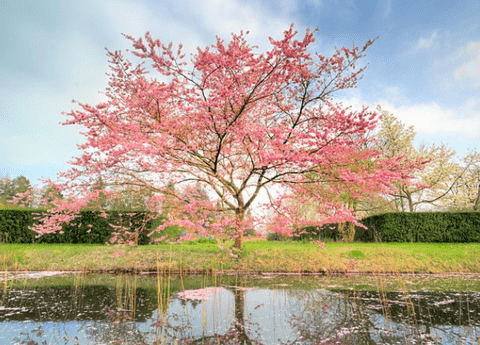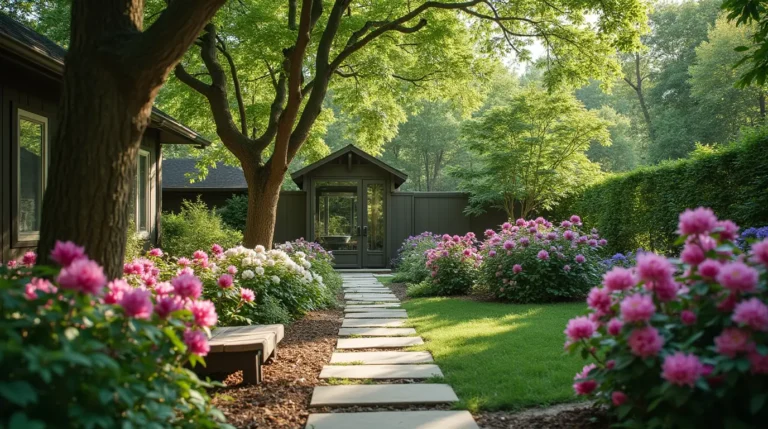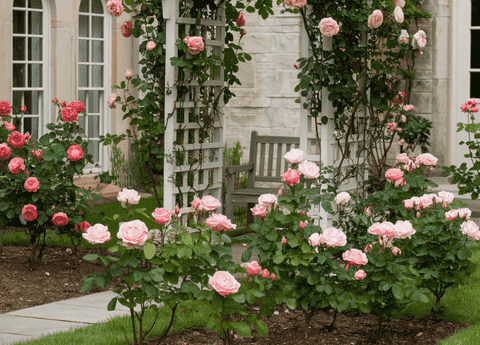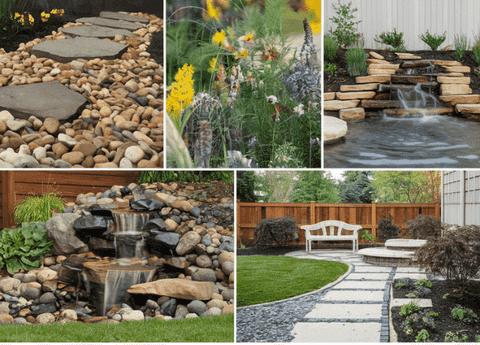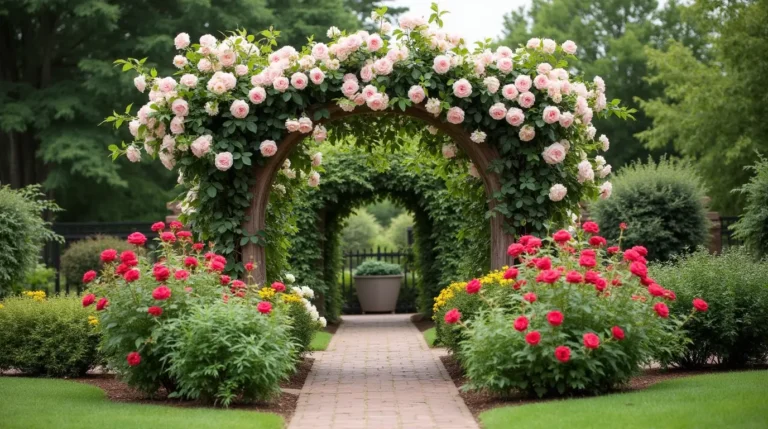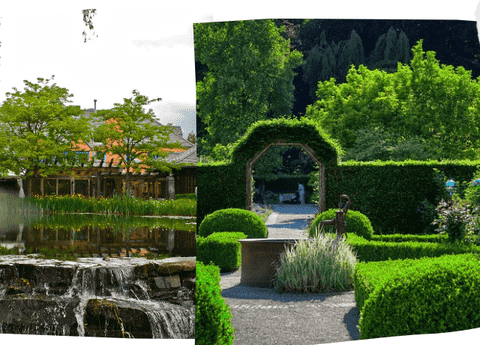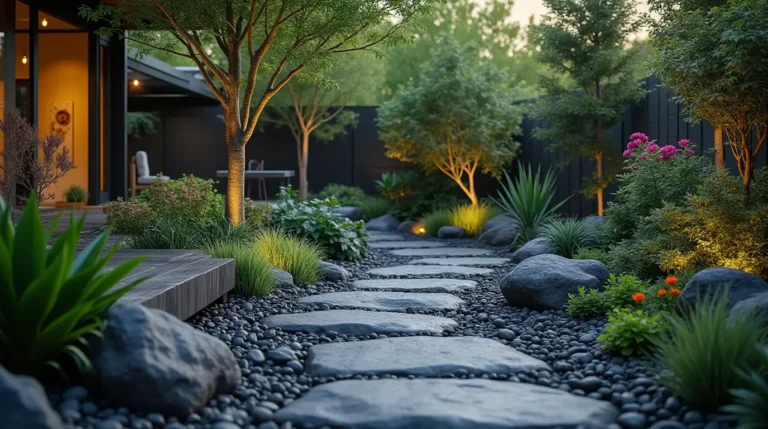11 Stunning Flowering Trees to Enhance Your Landscape
Table of Contents
Gardening enthusiasts and nature lovers alike find joy in the colors and fragrances of flowering trees. Whether you’re planning to add more vibrance to your garden or simply want to appreciate the beauty of these natural wonders, knowing how to identify them is essential. This guide will walk you through 15 stunning flowering trees, offering insights into their unique characteristics and identification tips.
The Majesty of Flowering Trees
Flowering trees are not just a feast for the eyes; they play a crucial role in ecosystems by providing habitat and food for wildlife. For garden enthusiasts, these trees can transform a landscape, adding structure, color, and seasonal interest. With such a variety of species to choose from, it’s easy to find a tree that suits your specific gardening conditions and aesthetic preferences.
Benefits of Planting Flowering Trees
Planting flowering trees in your garden comes with numerous benefits. They attract pollinators like bees and butterflies, contribute to the local ecosystem, and provide shade, making outdoor spaces more enjoyable. Additionally, many flowering trees have pleasant scents and can improve air quality. The presence of these trees can also increase property value, offering both immediate and long-term rewards.
Identifying Flowering Trees
Identifying flowering trees involves observing several key characteristics, including the shape and size of leaves, type of flowers, bark texture, and overall growth habit. By paying attention to these details, you can accurately determine the species and learn how best to care for them. In the sections that follow, we will explore 15 popular flowering trees and provide tips for their identification.
1. Cherry Blossom (Prunus serrulata)
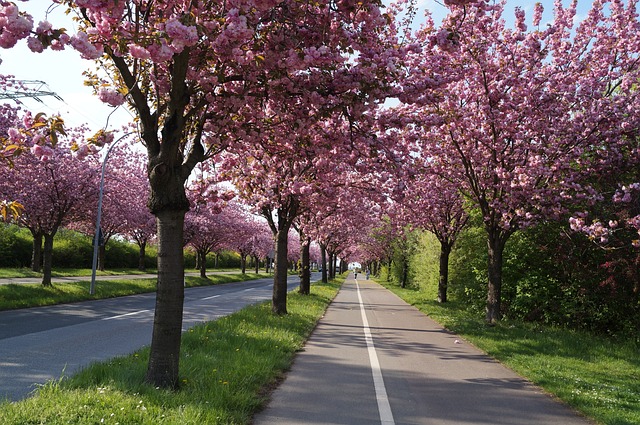
Climate Conditions:
- Zones: 5-8
- Sunlight: Full sun
- Soil: Moist, well-drained soil
Cherry blossoms are renowned for their breathtaking spring display of delicate pink or white flowers. These trees typically have smooth, reddish-brown bark and serrated leaves that turn vibrant colors in the fall. The flowers are small, clustered, and often appear before the leaves fully unfurl.
2. Dogwood (Cornus Florida)
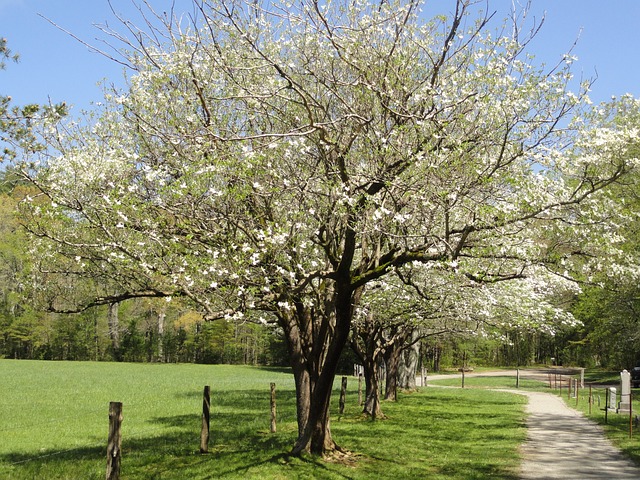
Climate Conditions:
- Zones: 5-9
- Sunlight: Partial shade
- Soil: Well-drained, acidic soil
Dogwoods are distinguished by their four-petaled bracts, which are often mistaken for flowers. The true flowers are small and clustered at the center of these bracts. Dogwood trees feature oval-shaped leaves with prominent veins and produce red berries in the fall.
3. Magnolia (Magnolia grandiflora)
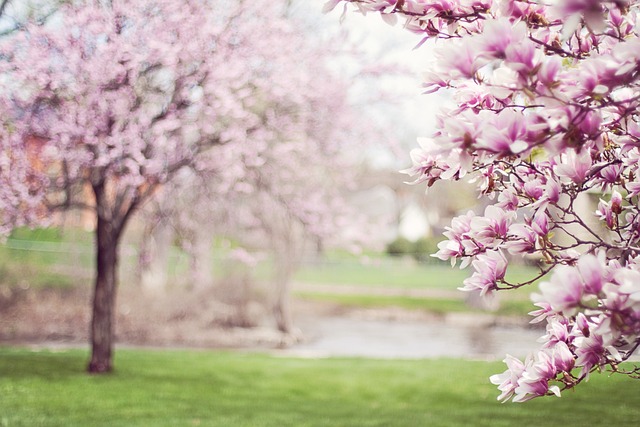
Climate Conditions:
- Zones: 6-10
- Sunlight: Full sun to partial shade
- Soil: Rich, well-drained soil
Magnolias are easily recognizable by their large, fragrant flowers, which can be white, pink, purple, or yellow. The leaves are glossy, leathery, and dark green, while the bark is smooth and gray. Magnolias are one of the earliest bloomers in spring, making them a favorite among gardeners.
4. Redbud (Cercis canadensis)
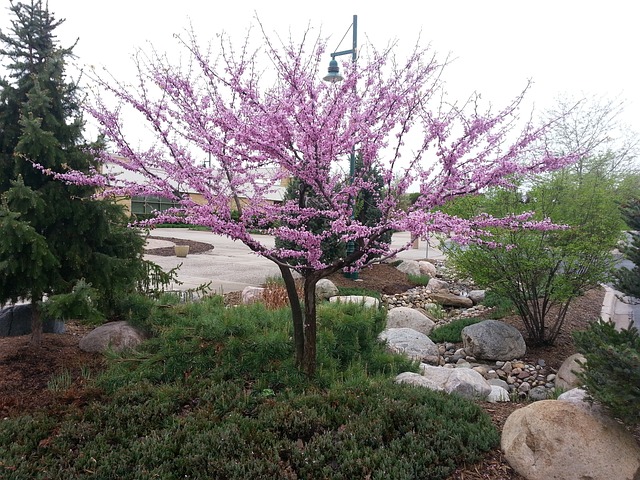
Climate Conditions:
- Zones: 4-9
- Sunlight: Full sun to partial shade
- Soil: Well-drained soil
Redbuds are known for their vibrant purple-pink flowers that bloom directly on the branches and trunk (a phenomenon known as cauliflory). The leaves have a heart shape and turn yellow in the autumn. Redbuds have a distinctive zigzag branching pattern, adding visual interest even when not in bloom.
5. Crape Myrtle (Lagerstroemia indica)
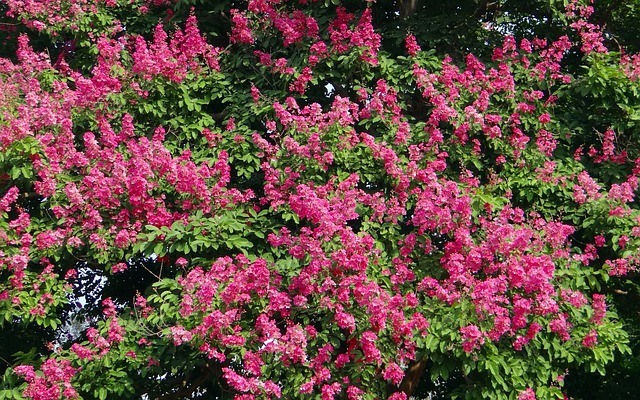
Climate Conditions:
- Zones: 7-9
- Sunlight: Full sun
- Soil: Well-drained soil
Crape myrtles are popular for their long-lasting summer blooms, which come in shades of pink, red, white, and purple. The bark peels in patches, revealing a smooth, mottled surface. Leaves are small, and oval, and turn bright colors in the fall. These trees are also prized for their attractive, twisting branches.
6. Jacaranda (Jacaranda mimosifolia)
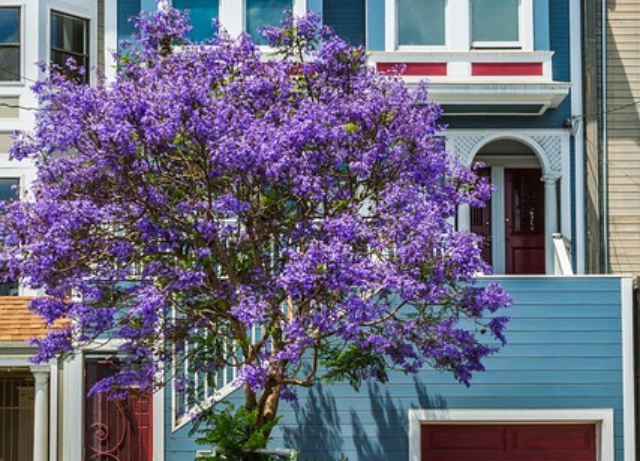
Climate Conditions:
- Zones: 9-11
- Sunlight: Full sun
- Soil: Well-drained soil
Jacarandas are celebrated for their striking clusters of lavender-blue flowers that cover the tree in late spring to early summer. The leaves are fern-like, composed of many small leaflets. The bark is thin and gray-brown, with a rough texture. Jacarandas thrive in warm climates and are a signature tree in many tropical and subtropical regions.
7. Crabapple (Malus spp.)
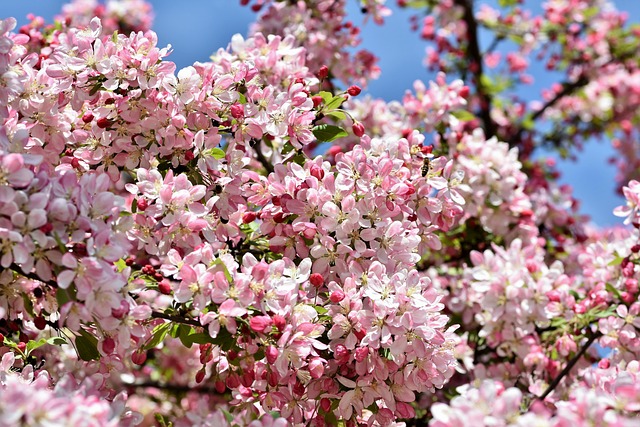
Climate Conditions:
- Zones: 4-8
- Sunlight: Full sun
- Soil: Well-drained soil
Crabapple trees produce an array of colorful flowers in spring, ranging from white to deep pink. The leaves are simple, oval, and toothed. In fall, the trees bear small, often brightly colored fruit. The bark is typically rough and scaly. Crabapples are hardy and adapt well to various soil conditions.
8. Golden Chain Tree (Laburnum anagyroides)
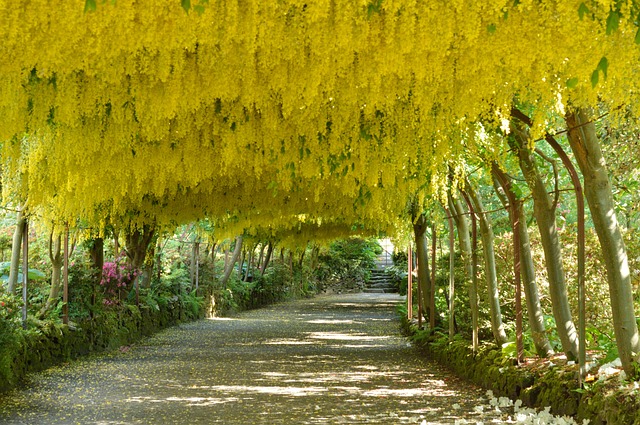
Climate Conditions:
- Zones: 5-7
- Sunlight: Full sun to partial shade
- Soil: Well-drained soil
The Golden Chain Tree is known for its long, drooping clusters of bright yellow flowers that resemble chains. The leaves are trifoliate, meaning each leaf is divided into three leaflets. The bark varies from green to gray-brown and becomes fissured with age. These trees thrive in cool climates and well-drained soil.
9. Tulip Tree (Liriodendron tulipifera)
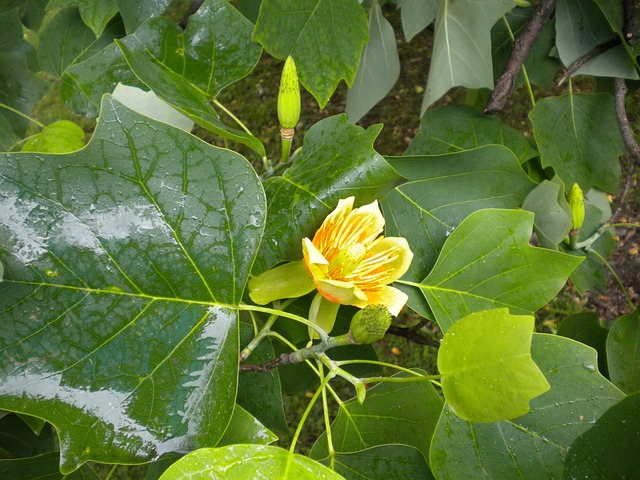
Climate Conditions:
- Zones: 5-8
- Sunlight: Partial shade
- Soil: Moist, well-drained soil
Tulip trees, also known as yellow poplars, have distinctive tulip-shaped flowers that are greenish-yellow with an orange band at the base. The leaves are uniquely four-lobed, resembling a cat’s face. The bark is light gray and develops furrows and ridges as the tree matures. Tulip trees are fast growers and can reach impressive heights.
10. Smoke Tree (Cotinus coggygria)
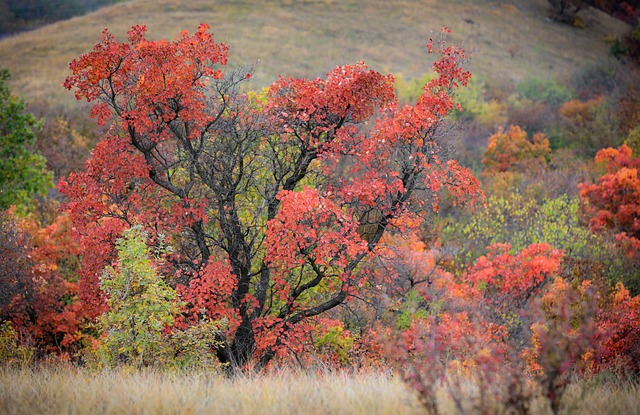
Climate Conditions:
- Zones: 5-8
- Sunlight: Full sun to partial shade
- Soil: Well-drained soil
Smoke trees are named for their fluffy, smoke-like flower clusters that appear in summer. The flowers come in shades of pink, purple, or yellow. The leaves are oval and can range in color from green to purple, turning brilliant shades in the fall. The bark is gray-brown and becomes ridged with age. Smoke trees add a dramatic flair to gardens with their unique appearance.
11. Hawthorn (Crataegus spp.)
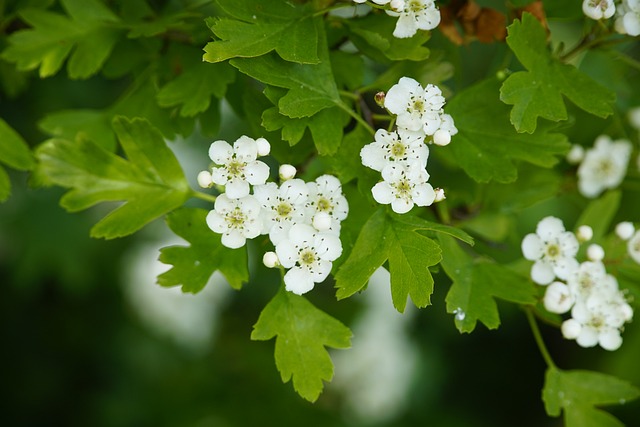
Climate Conditions:
- Zones: 4-7
- Sunlight: Full sun
- Soil: Well-drained soil
Hawthorns produce clusters of small, white, or pink flowers in spring, followed by bright red berries in the fall. The leaves are deeply lobed and serrated. The bark is rough and gray, often with thorns. Hawthorns are hardy trees that can tolerate various soil conditions and are often used in hedging.
Selecting the Perfect Flowering Tree for Your Garden
When selecting a flowering tree for your garden, consider factors such as climate, soil type, and available space. Research each tree’s growth habits and requirements to ensure it will thrive in your specific environment. Additionally, think about the tree’s mature size and how it will fit into your garden’s overall design.
Caring for Flowering Trees
Proper care is essential for the health and longevity of flowering trees. Regular watering, mulching, and pruning can help maintain their shape and promote vigorous growth. Be mindful of pests and diseases, and take preventive measures to protect your trees. Fertilizing in early spring can provide the nutrients needed for a spectacular bloom.
Conclusion
Flowering trees add beauty, fragrance, and biodiversity to any garden or landscape. By understanding how to identify these trees and knowing their unique characteristics, you can make informed choices about which species to plant. Remember to consider your local climate and soil conditions, and provide the necessary care to ensure your trees flourish.
Happy gardening! For more tips and personalized advice on selecting and caring for flowering trees, feel free to reach out to our gardening experts.

